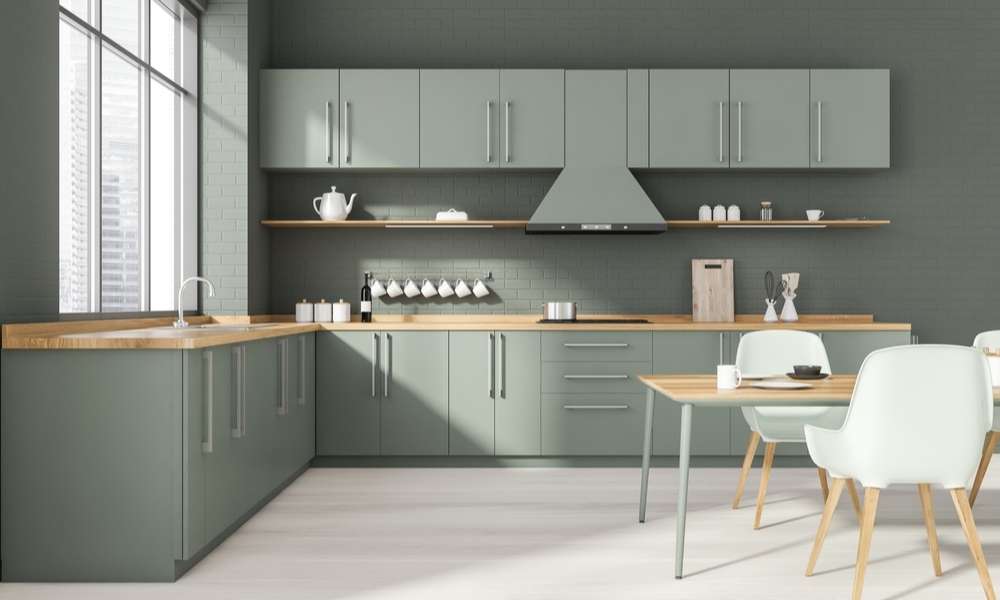Revamping your bedroom furniture can transform the entire ambiance of your space, and learning how to paint bedroom furniture without sanding is a game-changer for DIY enthusiasts and homeowners alike. This technique offers numerous benefits, including saving time and effort, minimizing dust and mess, and making it an ideal choice for those looking to update their furniture with minimal hassle. Understanding the importance of proper preparation and choosing the right products is crucial to achieving a flawless finish. By embracing this approach, you can easily refresh your bedroom’s look without the labor-intensive process of sanding, making it an accessible and efficient solution for giving your furniture a new lease on life.
What Are The Benefits Of Painting Furniture Without Sanding?
Painting furniture without sanding can offer several benefits for those looking to update their furniture quickly and easily. One of the main advantages is time-saving, as sanding can be a time-consuming and labor-intensive process. By skipping the sanding step, you can complete your furniture painting project in a fraction of the time.
Do I Need Any Special Tools To Paint Furniture Without Sanding?
Yes, you can paint furniture without sanding by using certain techniques and products that eliminate the need for extensive preparation. One of the key tools you may find helpful in this process is a good quality deglosser or liquid sander, which helps to remove any existing finish or gloss from the furniture surface. This step is crucial for ensuring proper adhesion of the new paint.
Sealing The Painted Furniture
Sealing painted furniture is a crucial step in ensuring its longevity and durability. When it comes to sealing bedroom furniture without sanding, using a quality sealant is key. Opt for a water-based polyurethane or a clear wax to protect the paint surface from scratches and spills. Applying multiple thin coats will provide better coverage and enhance the overall appearance of the painted furniture.
Adding A Second Coat
Adding a second coat of paint is a crucial step in achieving a flawless finish when painting bedroom furniture without sanding. This extra layer not only enhances the color depth but also improves durability, ensuring your furniture stays looking fresh for years to come. To achieve the best results, allow ample drying time between coats to prevent any streaks or uneven coverage. Additionally, using high-quality paint and brushes can make a significant difference in the final outcome, creating a smooth and professional finish that will elevate the aesthetic of your bedroom.
Filling Any Cracks Or Holes
Filling any cracks or holes in your bedroom furniture before painting can make a significant difference in the final result. Cheap and effective options include wood filler or spackling compound, which can seamlessly blend into the surface once painted over. It’s essential to ensure that the filling material matches the color and texture of your furniture for a flawless finish.
Labeling Paint Containers
A simple yet often overlooked aspect of painting bedroom furniture without sanding is the organization of your materials, particularly labeling paint containers. This practice saves time and confusion, especially if you’re working with multiple colors or taking breaks between painting sessions. Accurately labeled containers ensure that you can quickly identify the correct paint for touch-ups or additional pieces, maintaining consistency across your furniture. It’s a small step that can significantly enhance the efficiency and enjoyment of your painting project.
Using Contrasting Colors For Accents
Using contrasting colors for accents is a versatile and cost-effective way to refresh your bedroom furniture while avoiding the labor-intensive task of sanding. Embrace this design technique as an opportunity to express creativity and individuality within your living space. With careful consideration and experimentation with various color combinations, you can easily elevate the look of your bedroom decor and enjoy a personalized touch that reflects your unique style preferences.
Fixing Uneven Paint Coverage
Achieving even paint coverage is a common challenge when you paint bedroom furniture without sanding. However, this issue can be effectively addressed with the right techniques and materials. If you notice uneven paint coverage, a second or even third coat can be the key to obtaining that smooth, uniform finish. Ensure each layer is thoroughly dry before applying the next. Additionally, using a high-quality paintbrush or roller designed for the type of paint you’re using can significantly reduce the chances of uneven coverage. For areas that are notoriously difficult to cover evenly, such as edges or intricate designs, consider using a small artist’s brush for more precise application.
Using Stencils For A Customized Look
Stencils offer a fantastic way to personalize your bedroom furnishings without the need for sanding. They allow for intricate patterns, shapes, and designs that can be tailored to match your room’s theme or your personal style preferences. Whether you’re aiming for a sophisticated floral motif on your nightstand or a geometric pattern on your wardrobe, stencils can help achieve a customized look that’s unique to your space. The key to successful stenciling is to secure the stencil firmly in place with painter’s tape and apply a modest amount of paint with a stencil brush or sponge to avoid bleeding under the stencil.
Ensuring Cohesion With Existing Decor
To ensure cohesion with existing decor when painting bedroom furniture without sanding, consider the color palette of the room. Choose a paint color that complements the existing tones and textures to create a harmonious space. Additionally, using high-quality paint and primer will help achieve a smooth finish and long-lasting results. Experimenting with different painting techniques, such as distressing or antiquing, can add character and depth to your furniture while maintaining consistency with your decor scheme.
Techniques For Painting Without Sanding
1. Brushing Vs. Spraying
Brushing paint onto furniture offers a hands-on approach, allowing for meticulous control over the application. It’s ideal for achieving a textured, classic look and is often preferred for smaller projects or detailed work. On the other hand, spraying can significantly speed up the process, providing a smooth, even coat that’s hard to achieve with a brush. While spraying requires a bit more setup, including protective measures to avoid overspray, it’s excellent for achieving a professional finish on larger pieces or when working on multiple items.
2. Applying Multiple Thin Coats
Regardless of the method chosen, applying multiple thin coats of paint is crucial for achieving a durable, high-quality finish without sanding. Thin coats dry faster, adhere better, and are less prone to drips or brush marks compared to a single thick coat. This technique also allows for more even color distribution and a smoother overall appearance. Patience between coats is key, as fully drying ensures the subsequent layer adheres properly and builds up a strong finish.
Reasons For Sanding Between Coats
Sanding between coats is essential when painting bedroom furnishings without sanding. One crucial reason is to ensure a smooth and flawless finish. By sanding between coats, you are able to remove any imperfections such as drips or bumps that may have occurred during the application process. This helps create a more professional-looking end result that will last longer.
Staying Updated On Current Styles
Staying updated on current styles and trends is another crucial aspect of successfully painting bedroom furnishings without sanding. As home decor trends evolve, so do painting techniques and product offerings. Engaging with home improvement blogs, social media platforms, and DIY forums can provide inspiration and practical advice, ensuring that your furniture painting project not only skips the hassle of sanding but also results in a fashionable and contemporary look that enhances your bedroom’s overall aesthetic.
The Final Thought
Painting bedroom furniture without sanding is a practical and efficient way to transform your space. By following the steps outlined in this article, you can achieve a beautifully painted finish with minimal effort. Remember to choose high-quality paint and primer for a durable and long-lasting result. With the right tools and techniques, you can easily update your bedroom furnishings to match your style and décor. Take the time to prepare properly and enjoy the process of giving your furniture a fresh new look without the hassle of sanding.





